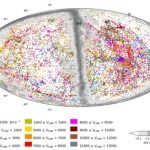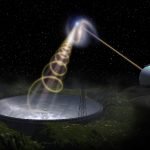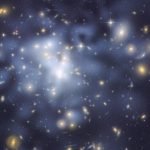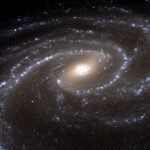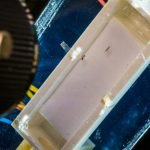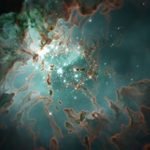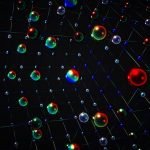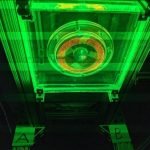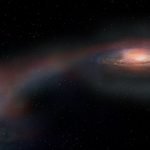Astronomers map distances to 56000 galaxies, largest-ever catalog
How old is our universe, and what is its size?
A team of researchers led by the University of Hawaiʻi at Mānoa astronomers Brent Tully...
Astronomers unveil new and puzzling features of mysterious fast radio bursts
Fast radio bursts (FRBs) are millisecond-long cosmic explosions that each produce the energy equivalent to the sun’s annual output.
More than 15 years after the...
Why dark matter halos of ultra-diffuse galaxies are so odd
Scientists have found that dark matter halos of ultra-diffuse galaxies are very odd, raising questions about physicists’ understanding of galaxy formation and the structure...
Over-eating may be to blame for bulges in Milky Way bar
A new simulation conducted on the world’s most powerful supercomputer dedicated to astronomy has produced a testable scenario to explain the appearance of the...
Scientists see spins in a 2D magnet
All magnets—from the simple souvenirs hanging on your refrigerator to the discs that give your computer memory to the powerful versions used in research...
The physics of walking is simpler than we thought
The physics of walking for multi-legged animals and robots is simpler than previously thought.
That is the finding described by a team of roboticists, physicists...
Why stars formed in different environments have similar masses
Last year, a team of astrophysicists launched Star Formation in Gaseous Environments, or STARFORGE, a project that produces the most realistic, highest-resolution 3D simulations...
This matter is about 3 billion times colder than deep space
Physicists have used atoms about 3 billion times colder than interstellar space to open a portal to an unexplored realm of quantum magnetism.
“Unless an...
Scientists reveal new dynamical framework for turbulence
Turbulence plays a key role in our daily lives, making for bumpy plane rides, affecting weather and climate, limiting the fuel efficiency of the...
Scientists detect deadly star-slinging tug-of-war between merging galaxies
While observing a newly-dormant galaxy using the Atacama Large Millimeter/submillimeter Array (ALMA) and the Hubble Space Telescope (HST), scientists discovered that it had stopped...

